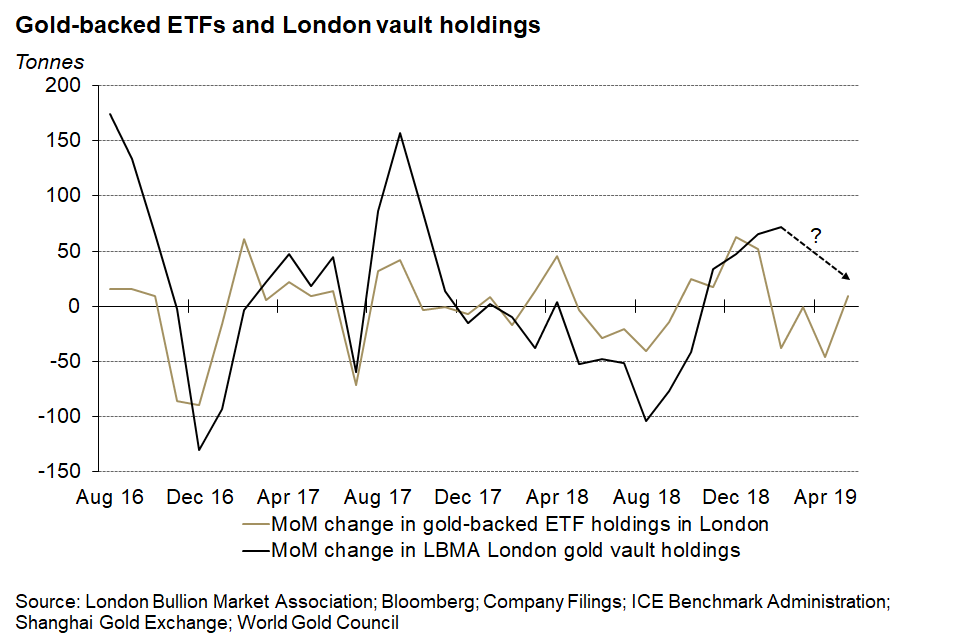Sitting in-between the major trading centres of New York (COMEX) and Shanghai (Shanghai Gold Exchange) is the beating heart of the physical gold market: London.
As most of the trading in London takes place ‘over-the-counter’, a significant portion of it was historically hidden from view. But since 2017, the London Bullion Market Association (LBMA) has been publishing the amount of gold held in vaults within London, following this up with a more detailed trade data series in November 2018.1 2 This data not only includes vaulted holdings from the seven custodians offering vaulting services, but also the holdings at the Bank of England.3
According to the latest LBMA statistics there was over 7,600t held in vaults within the M25 motorway which surrounds London (and often doubles as Europe’s largest car park).4 And a significant amount of the space in these vaults is taken up by pallets owned by gold-backed exchange-traded funds (ETFs). This shows how important these products have become in respect to gold ownership. Since their introduction in 2003, global holdings in gold-backed ETFs have grown to almost 2,500t (having previously hit a peak of almost 3,000t).
We estimate that almost 20% of gold vaulted in London is allocated to gold-backed ETFs, accounting for just over 50% of global gold-backed ETF holdings. It should come as little surprise then that changes in vault holdings in London and ETF holdings track one another fairly closely – with a correlation of 0.53 (see chart).

